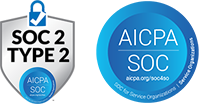What Is Human Capital Management (HCM)?
Human Capital Management (HCM) is the comprehensive strategy and technology framework that manages an organization’s workforce as strategic assets. It spans recruiting, onboarding, learning, performance, compensation, succession, and analytics—ensuring the right talent is hired, developed, and aligned to business goals while maximizing productivity and engagement.
It ensures the right talent is hired, developed, and aligned to business goals while maximizing productivity and engagement.
Why Human Capital Management (HCM) Matters
By treating employees as investments rather than costs, HCM drives better decision-making. Integrating data across HR systems delivers insights on talent gaps, development needs, and turnover risks. Leaders use HCM analytics to forecast hiring needs, optimize labor costs, and build resilient succession pipelines—turning people data into a competitive advantage.
Where Human Capital Management (HCM) Is Used
HCM solutions support diverse organizational contexts:
- Growing Enterprises: Establish scalable recruitment, onboarding, and learning workflows as headcount expands.
- Global Corporations: Harmonize pay, benefits, and compliance across multiple regions and legal regimes.
- Highly Regulated Industries: Track certifications, licenses, and mandatory training for continuous audit readiness.
- Unionized Workforces: Automate collective-bargaining provisions, shift scheduling, and grievance tracking.
- Remote & Hybrid Environments: Provide self-service portals for time tracking, goal management, and employee feedback anywhere.
Human Capital Management (HCM) Key Benefits
- Strategic Alignment: Maps talent plans to business objectives through role-based workforce planning.
- Operational Efficiency: Automates repetitive tasks—such as payroll, benefits enrollment, and leave requests—freeing HR for high-value work.
- Talent Insights: Leverages dashboards to spot flight-risk populations, skills shortages, and high-potential cohorts.
- Employee Experience: Delivers mobile self-service for pay, performance, and learning—boosting engagement and retention.
- Compliance & Risk Mitigation: Maintains audit trails, policy enforcement, and real-time alerts for regulatory changes.
Best Practices & Examples
- Unified Data Model: Centralize HRIS, ATS, LMS, and payroll data to ensure one source of truth—reducing reconciliation work.
- Role-Based Permissions: Secure sensitive data by granting managers and employees only the access they need.
- Continuous Listening: Embed pulse surveys and sentiment analysis to refine policies and detect emerging issues.
- AI-Driven Talent Matching: Use machine learning to recommend internal mobility opportunities and speed up candidate-role fit.
- Example: A retail chain implemented HCM with career-pathing modules allowing associates to view and apply for roles—they saw internal hires rise by 35% in one year.
Conclusion
Human Capital Management elevates HR from administrative support to strategic partner. By unifying processes, automating tasks, and harnessing analytics, HCM empowers organizations to attract, develop, and retain the talent needed for sustained growth—transforming workforce data into informed, proactive talent strategies.
Human Capital Management (HCM) FAQs
Q: What is HCM human capital management?
Human Capital Management (HCM) is the integrated set of systems and practices for recruiting, onboarding, performance management, learning, compensation, and analytics—treating employees as assets to drive strategic business outcomes.
Q: What is the work of HCM?
HCM manages the entire employee lifecycle: forecasting skills needs, sourcing and hiring talent, delivering training, setting and reviewing goals, administering pay and benefits, and analyzing people data to guide talent decisions.
Q: What is the HCM for?
HCM systems unify HR, payroll, learning, and talent data to automate transactions, enforce compliance, and surface insights—enabling HR and business leaders to align workforce planning with organizational strategy.
Q: How is HCM different from HR?
HR is the function focused on policies and employee relations. HCM is the broader strategy and technology platform that automates HR processes, aggregates workforce data, and provides analytics to optimize talent management end-to-end.




